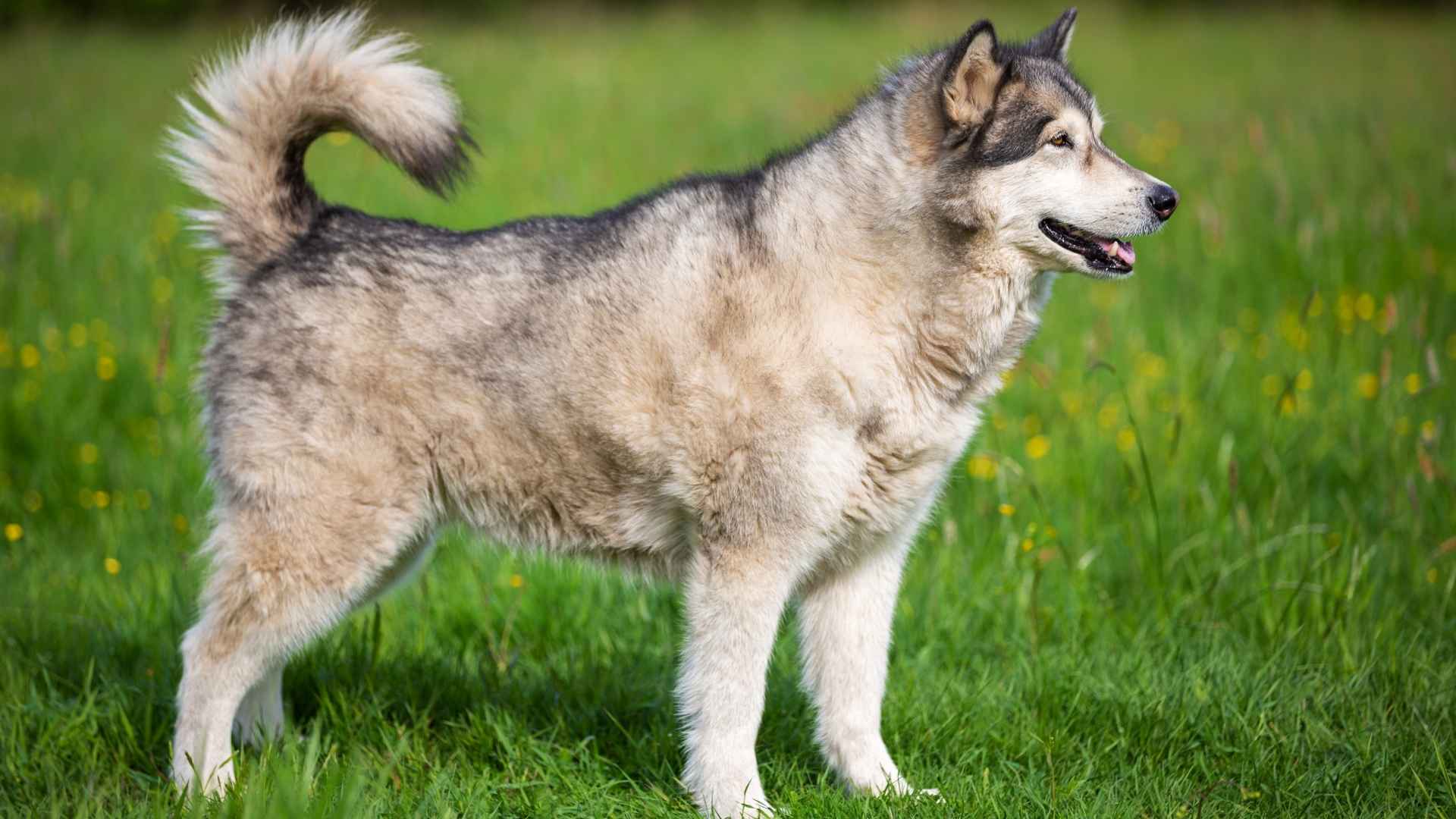Tails are more than just wagging indicators of canine joy; they’re also one of the most charming and diverse features dogs possess. Among the many types, curly tails hold a special place in the hearts of dog lovers. Spiraling over their backs in elegant loops or perky spirals, curly tails add an extra dash of personality and cuteness to already lovable companions.
These captivating curves aren’t just for show. The unique structure of wedge-shaped vertebrae, known as hemivertebrae, causes the dog’s tail to naturally curl. Whether it forms a loose arc or a tightly coiled corkscrew, the shape depends on the breed’s genetics. From toy breeds to working dogs, curly tails appear across sizes and temperaments, proving that this distinctive feature isn’t confined to a specific type.
While a curly tail might be the first thing to catch your eye, it’s only the beginning. Each breed that sports this whimsical trait also brings its own rich history, temperament, and quirks. Let’s explore the fascinating world of dogs with curly tails and what makes each one delightfully unique.
Dog Breeds With Curly Tails
1. Pug

Pugs are one of the most iconic breeds when it comes to curly tails, often flaunting a tightly wound spiral that rests right over their backs. Their trademark tail isn’t just adorable, it’s a breed hallmark. Originally bred to be cherished companions in the imperial courts of China, Pugs have since found a place in households across the globe.
Their affectionate, clownish personalities and natural sociability make them crowd favorites, especially with children, other dogs, and pets. PDSA states that Pugs are smart and loving dogs, which makes them a favorite among pet owners.
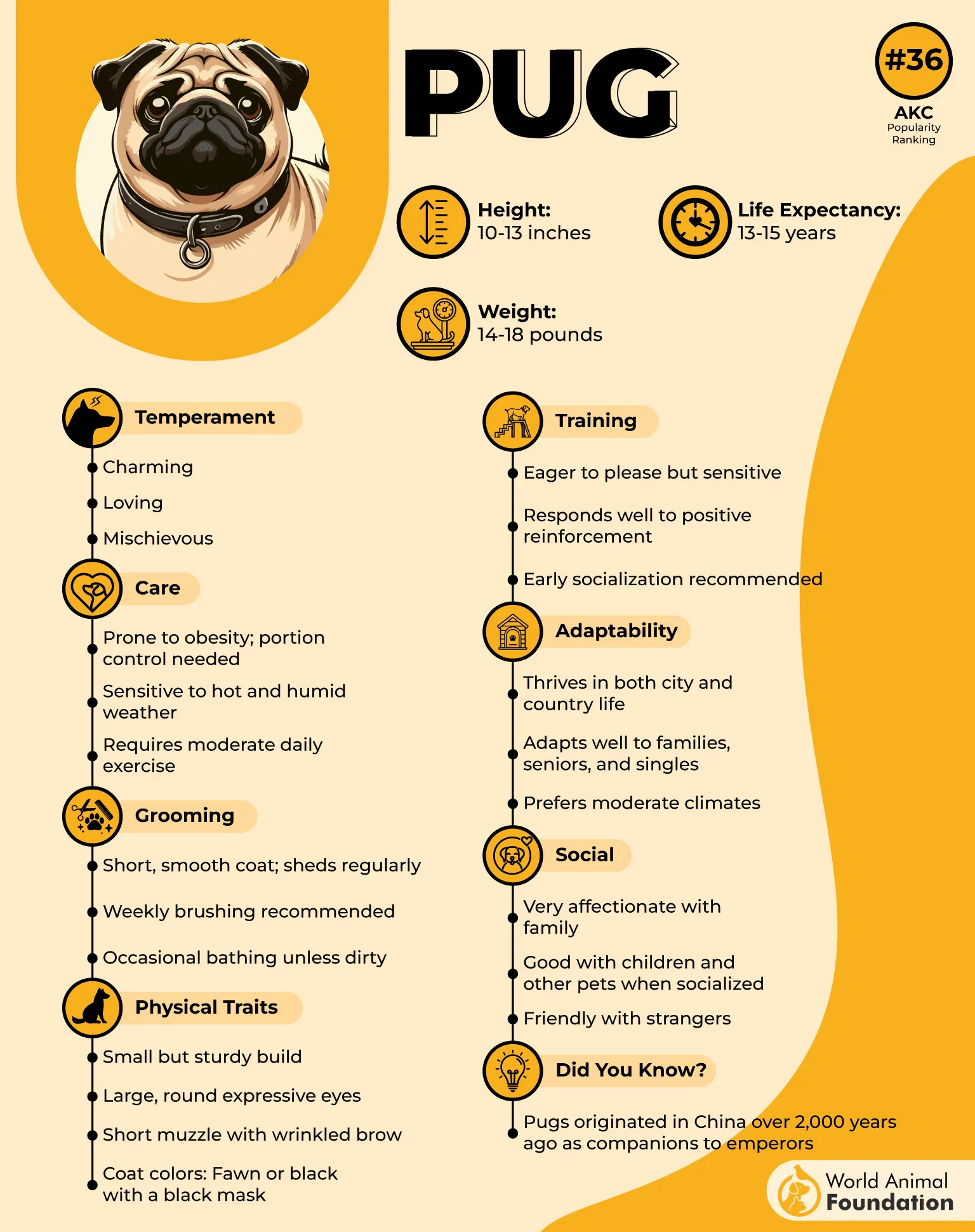
Appearance
Compact and charming, Pugs typically stand between 10 to 13 inches tall and weigh around 14 to 18 pounds. Their bodies are square and muscular, topped with a broad, wrinkled face and large, expressive eyes that give them a permanently endearing expression.
The tail, curled like a cinnamon roll, is one of their most distinctive features. While most Pugs maintain a tight curl, their tails may briefly loosen when they’re fatigued, unwell, or particularly relaxed. Some pet parents even believe it hints at a guilty conscience.
Fact: Pugs’ curled tails can uncurl when they’re tired or stressed, often adding a layer of personality to their already expressive appearance.
2. Basenji
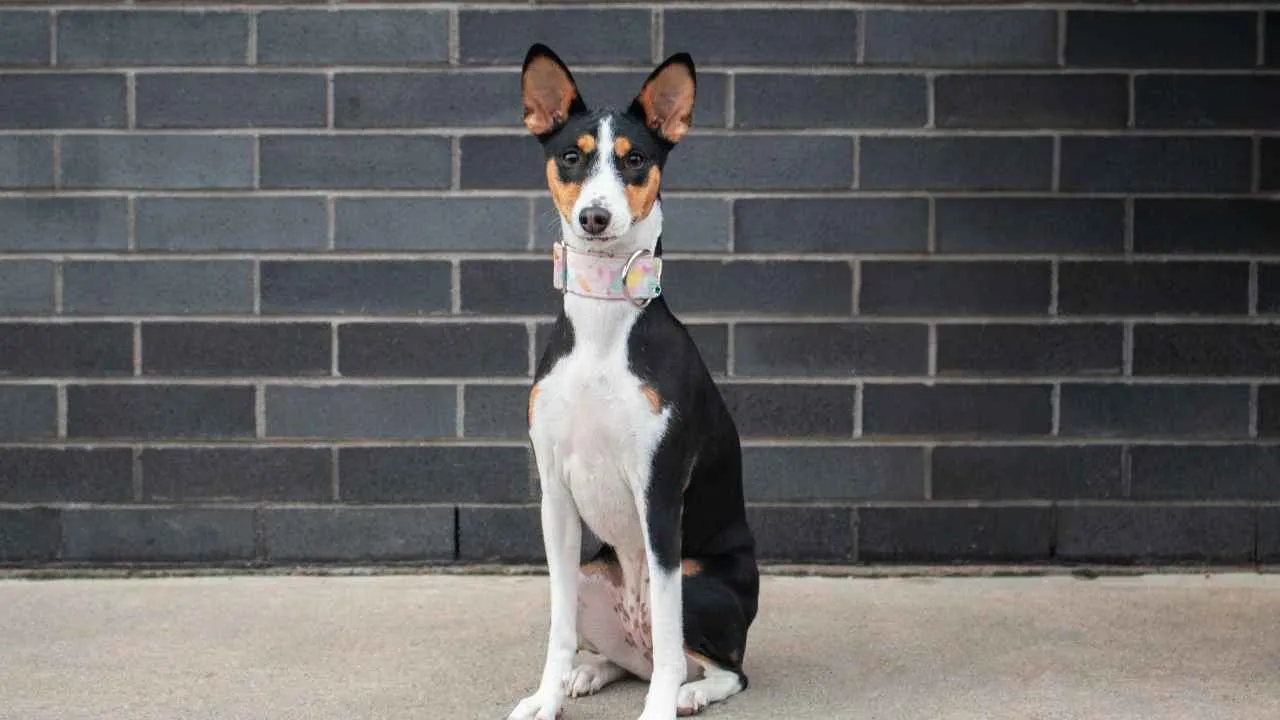
Basenjis are intelligent and self-reliant dogs, as per WebMD. Originally bred in Central Africa for hunting small game, this breed is often referred to as the “barkless dog” thanks to its distinct yodel-like vocalization.
Energetic and intelligent, Basenjis form strong bonds with their families and display a poised yet independent temperament. While they are loyal companions, they may be more reserved around other pets.
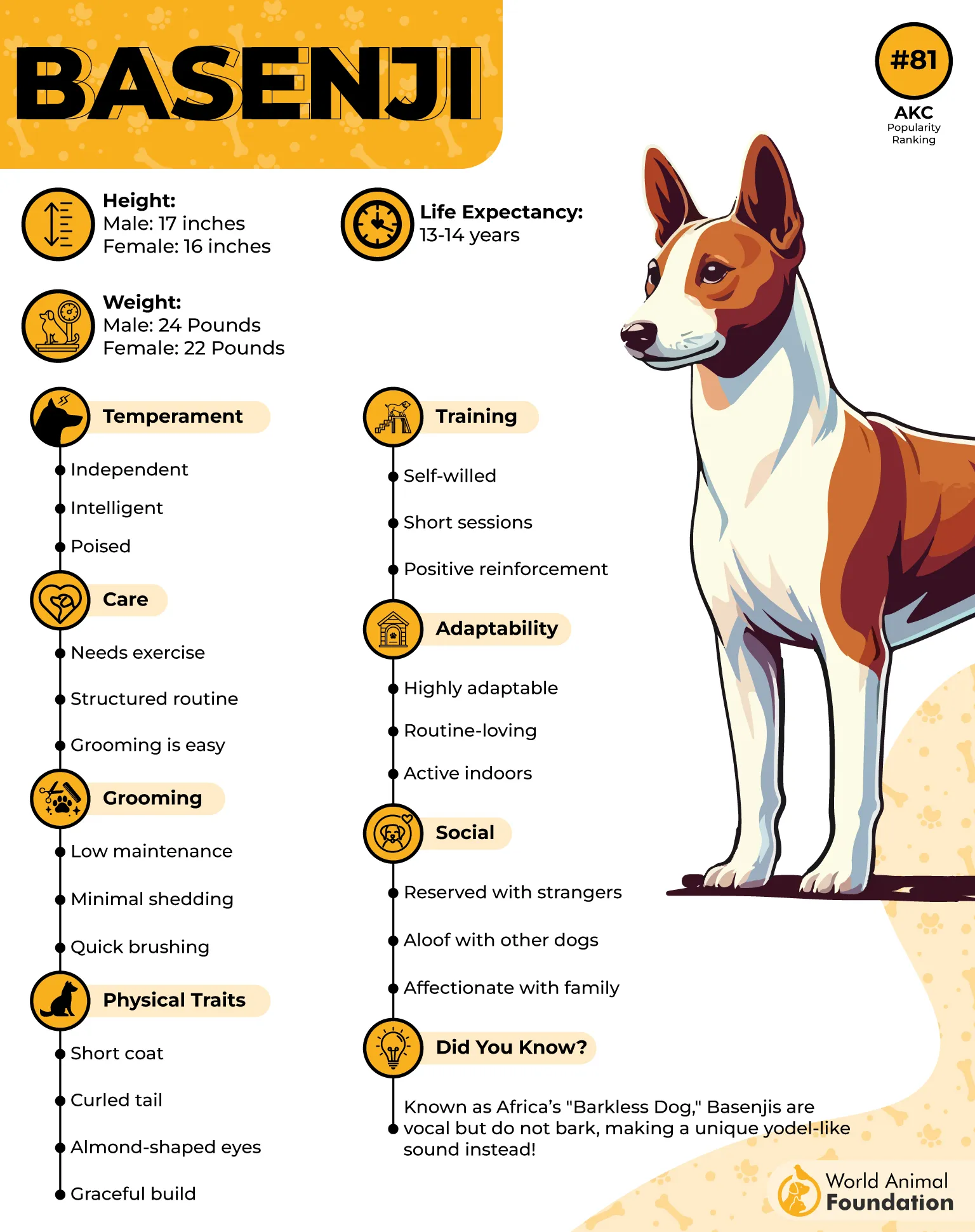
Appearance
The Basenji’s tail curls in a tight loop, adding elegance to its sleek and compact frame. Males typically stand around 17 inches tall and weigh up to 24 pounds, while females are slightly smaller at 16 inches and 22 pounds.
Their short, smooth coat comes in various striking combinations, including brindle, red, black, and white, or tricolor. Distinctive features like a wrinkled forehead and alert, upright ears give them a fox-like expression and an aura of constant curiosity.
Fact: Basenjis don’t bark like typical dogs; instead, they communicate using yodel-like sounds, a trait that adds to their mystique.
3. Finnish Spitz
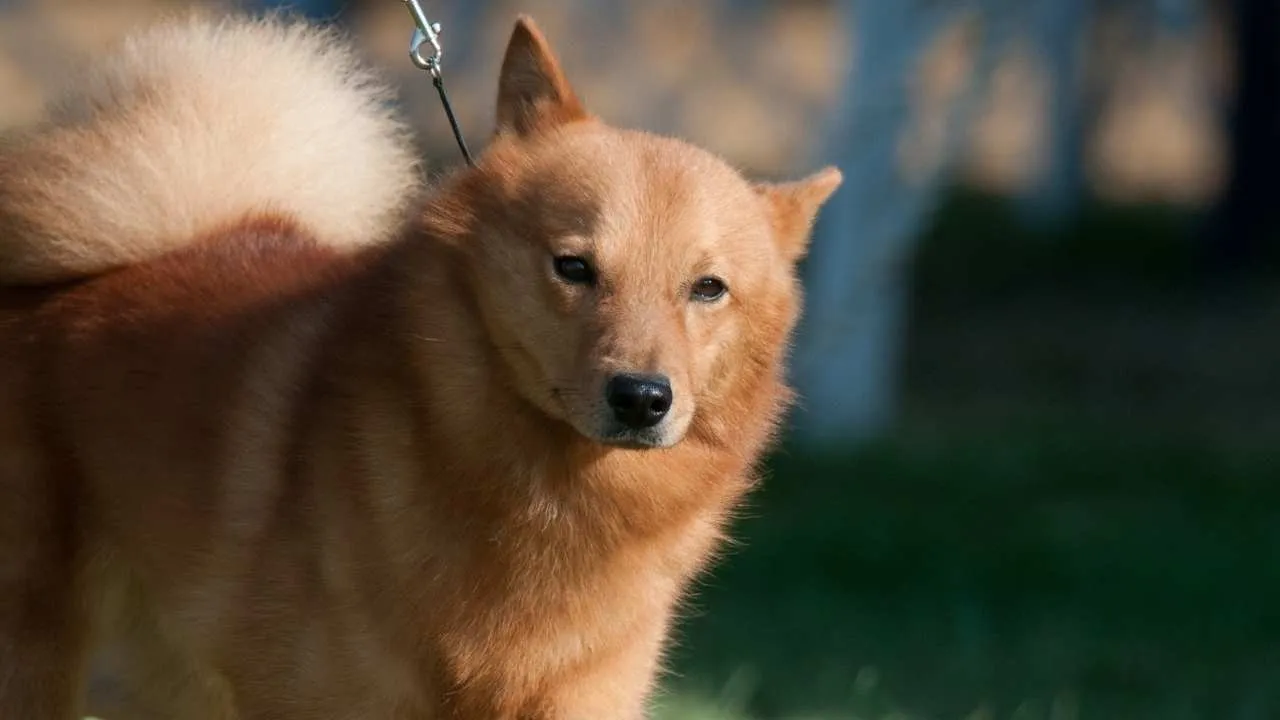
The Finnish Spitz proudly flaunts a high-set, plumed tail like a fiery banner. This breed traces its roots to Finland, where it was originally developed for hunting birds and small game. According to the AKC, the Finnish Spitz is cheerful, sociable, and energetic.
Their independence and sharp instincts made them excellent working dogs, and today, those same qualities translate into alert, lively companions. Known for their good-natured personalities, Finnish Spitz dogs get along well with children and active families, especially those who enjoy the outdoors.
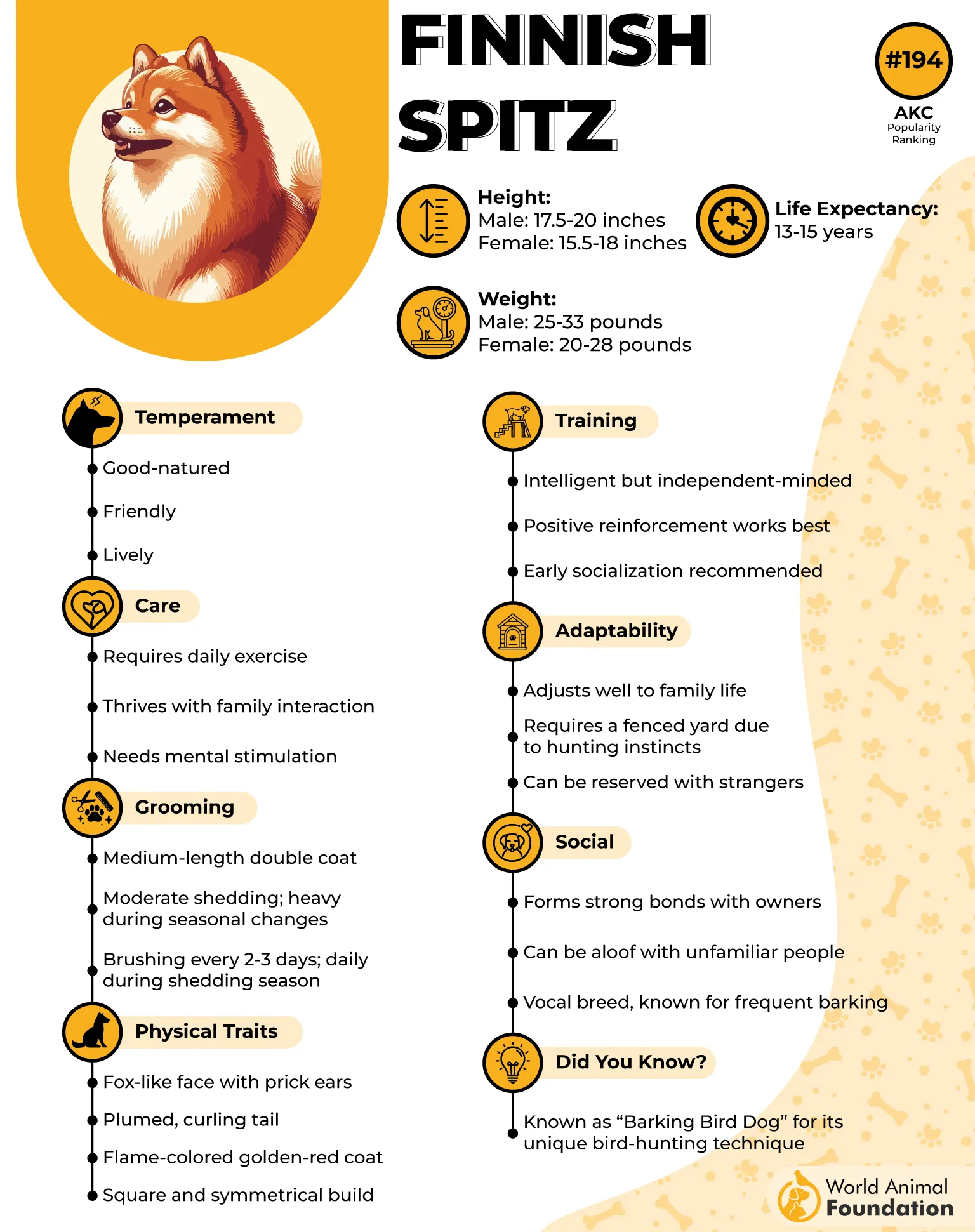
Appearance
With their fox-like features and vibrant red-gold coats, Finnish Spitz dogs are unmistakable. Males typically stand 17.5 to 20 inches tall and weigh between 25 to 33 pounds, while females measure 15.5 to 18 inches and weigh around 20 to 28 pounds.
Their medium-length double coat is thick and weather-resistant, adding to their bushy, curled tail’s visual flair. Upright ears and almond-shaped eyes complete the breed’s alert, intelligent look.
Fact: The Finnish Spitz is known for its curled, plumed tail and distinctive red-gold coat, making it often referred to as “the bark pointer” in its native Finland.
4. Shiba Inu
The Shiba Inu is a spirited and ancient breed from Japan, well-known for its striking appearance and famously curled tail. A member of the spitz family, this small hunting dog boasts a proud and independent demeanor, often likened to that of a cat. Originally bred for navigating rugged terrains and hunting small game, Shibas are agile, alert, and full of personality.
Britannica states that the Shiba Inu is a sturdy breed recognized for its boldness, alert nature, and distinct triangular eyes. Their curled tail is more than just cute; it’s a defining trait that arcs gracefully over their back, enhancing their bold silhouette.
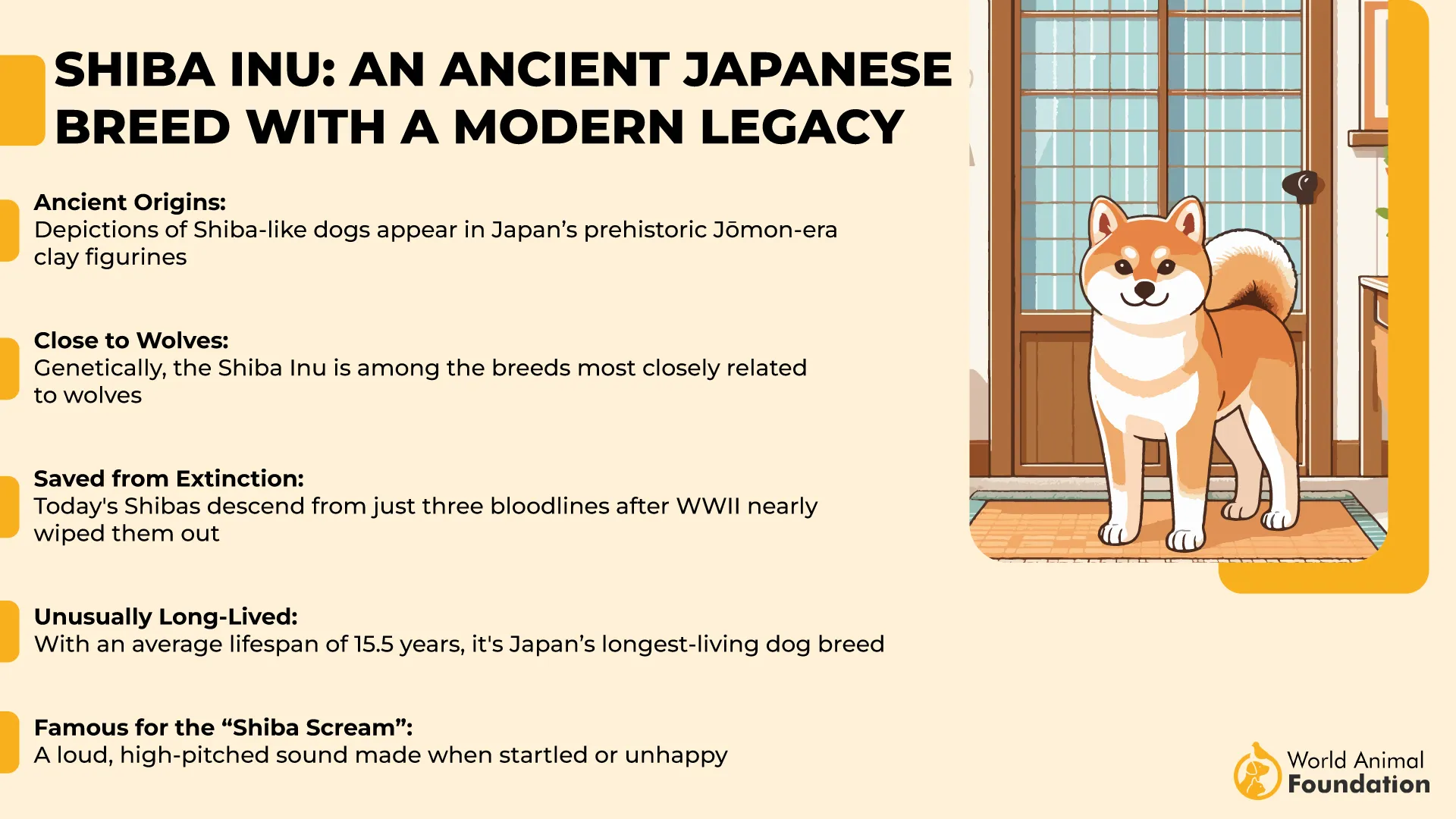
Appearance
These small dogs are compact and muscular, with males typically standing 17.5 to 20 inches tall and weighing between 25 to 33 pounds, while females range from 15.5 to 18 inches in height and 20 to 28 pounds in weight.
Their plush double coat, usually in red, gold, or red-gold, adds to their fox-like charm, alongside sharp, upright ears and expressive dark eyes. The tightly curled, plumed tail sets them apart, curling in a single or double loop.
Fact: The Shiba Inu is one of the most genetically distinct and oldest dog breeds, with roots that date back thousands of years in Japan.
5. Norwegian Buhund
The Norwegian Buhund has a distinctive tail arching tightly over its back in true spitz fashion. Bred for life in the cold Nordic regions, these energetic dogs once served alongside Vikings, herding livestock, and guarding settlements. Their tightly curled tails not only help with balance but also give them a signature silhouette that reflects their spitz lineage.
Appearance
Medium-sized and muscular, these herding dogs typically stand up to 18.5 inches tall and can weigh as much as 40 pounds. Their thick, double-layered coat, either wheaten or black, offers protection from harsh weather.
A wedge-shaped head, upright ears, and expressive eyes complete their alert expression. Most notably, their high-set, curled tail sits proudly atop their back, a hallmark of their breed and working background. This breed is agile and well-proportioned, embodying both elegance and strength.
Fact: Norwegian Buhunds were once buried beside Vikings so they could continue protecting their masters in the afterlife.
6. Akita
Among the most dignified and powerful breeds, the Akita is easily recognized by its robust build and the prominent, plush tail that curls elegantly over its back. This unique tail shape is not only an iconic feature but also varies subtly in curl and set from one individual to another, giving each Akita a distinct silhouette.
Originally bred in Japan for hunting large game like elk and bear, Akitas are deeply loyal, protective, and reserved around strangers—yet warm and affectionate with their families.
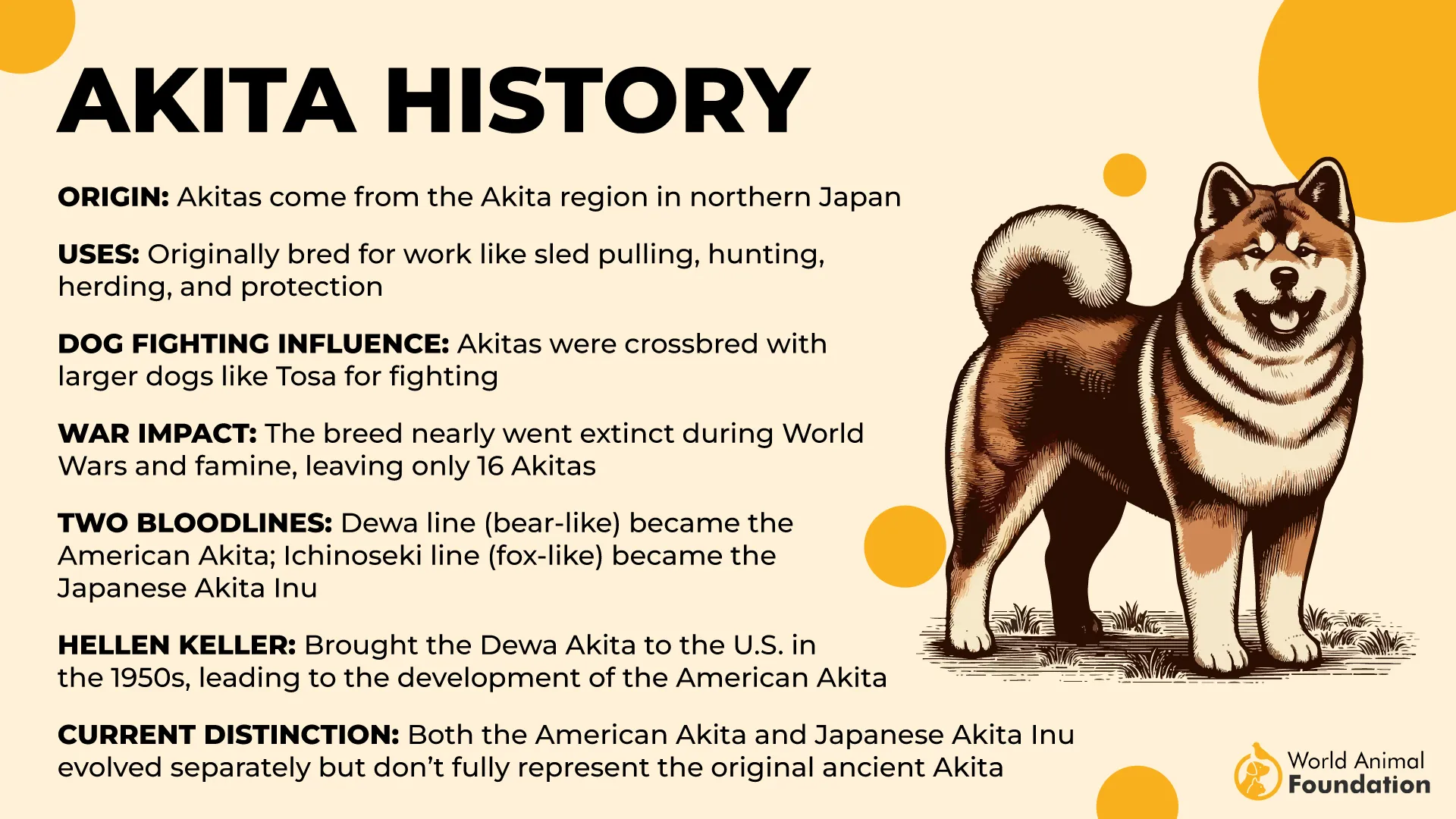
Appearance
These affectionate dogs are strong, spitz-type dogs with heavy bones and a striking presence. Males typically stand 26 to 28 inches tall and weigh 100 to 130 pounds, while females are slightly smaller at 24 to 26 inches and 70 to 100 pounds.
They sport a thick double coat that comes in colors such as fawn, red, white, brindle, and black. Their expressive dark eyes, erect ears, and large curled tail balance a broad head, lending them a look of watchful confidence.
Fact: The famous Akita named Hachiko became a national symbol of loyalty in Japan for waiting nine years at a train station for his deceased owner.
7. Chow Chow
Few breeds are as instantly identified as the Chow Chow, thanks in part to their majestic, curled tails that drape elegantly over their backs. Originating in ancient China, this breed was developed for a variety of tasks, from hunting and guarding to pulling carts. Their distinctive tail, paired with their reserved yet loyal nature, reflects their noble heritage and strong-willed personality.
Appearance
Chow Chows are compact, medium-sized dogs weighing between 45 to 70 pounds and standing 17 to 20 inches tall at the shoulder. Their lion-like mane, deep-set eyes, and proud bearing give them an air of regal dignity.
One of their most iconic features is their thick double coat, which comes in red, black, cream, blue, or cinnamon shades. Equally noteworthy is their blue-black tongue, a rare trait among dog breeds. The curled tail is buried in dense, plush fur that adds to their bear-like silhouette.
Fact: The Chow Chow’s curled tail and stiff-legged gait, along with its ancient lineage, reflect its close genetic ties to the wolf.
8. Keeshond
Originally bred in 18th-century Holland as a barge watchdog and loyal companion, this breed thrives on affection and family interaction. Known for their social, intelligent nature, Keeshonden are enthusiastic about meeting new people and animals, making them an ideal fit for households with children or multiple pets. Their alert demeanor and expressive faces also contribute to their reputation as excellent watchdogs without being overly aggressive.
Appearance
The Keeshond is a medium-sized dog, standing about 17 to 18 inches tall and typically weighing between 35 to 45 pounds. Its luxurious double coat, dense and fluffy, accentuates its northern heritage.
A distinct mane-like ruff around the neck and sharply pointed ears add to the breed’s regal look. But it’s the lush, high-set, curled tail that truly completes the silhouette, arching gracefully and blending seamlessly with the coat.
Fact: Keeshonden were once beloved companions aboard Dutch canal barges, earning them the affectionate nickname “barge dogs.”
9. Norwegian Elkhound
This breed has a long history of braving cold terrains while tracking formidable game like elk, wolves, and bears. Their tightly curled tails are emblematic of the breed’s alertness and strength. Loyal to a fault, these dogs form deep connections with their humans and thrive in active households that match their energy.
Appearance
Norwegian Elkhounds are medium-sized, ruggedly built dogs, standing about 20.5 inches tall for males and 19.5 inches for females, with respective weights of 55 and 48 pounds. Their dense double coats are typically silver-gray, with darker shading along the muzzle, back, and tail.
Their tails, plush and tightly curled, rest firmly atop their backs, a defining feature that enhances their foxlike profile. Muscular frames and wedge-shaped heads give them a noble, alert appearance that reflects their working-dog roots.
Fact: The Norwegian Elkhound’s cute and curly tails, along with its thick coat, evolved to help it endure the harsh Scandinavian wilderness while hunting large game like elk and bear.
10. Alaskan Malamute
The Alaskan Malamute’s curled tail arched gracefully over their back. This plume-like tail not only adds to their majestic appearance but also serves a practical purpose, helping shield their nose from the cold while resting in frigid conditions.
Originally bred by the Inuit people for sledding and hunting, these powerful dogs are built for endurance and thrive on having a task.
Appearance
With their thick double coat, erect ears, and broad head, Alaskan Malamutes exude strength and rugged beauty. Males typically stand around 25 inches tall and weigh about 85 pounds, while females average 23 inches and 75 pounds.
Their luxurious coats come in shades ranging from white and gray to red, sable, and even agouti. The iconic curled tail is full and feathery. This striking feature pairs perfectly with their wolf-like silhouette.
Fact: These curly-tailed dogs help protect their noses from harsh Arctic winds when curled up to rest.
Conclusion
Curly tails are more than just charming quirks; they’re shaped by generations of function and form. From the tight corkscrew of a Pug to the feathered plume of an Alaskan Malamute, these tails often trace back to purposeful origins. For example, in breeds like Siberian Huskies and spitz breeds, the curled tail acts as a built-in blanket, curling over the face during rest to retain warmth.
Interestingly, the distinct curve in these tails stems from the shape of the tail vertebrae, which in some breeds resemble those found in wild dogs. Even the lesser-known Curly Coated Retriever may sport a slight tail curve that complements its unique coat. Whether curled for warmth, expression, or balance, these tails reflect a beautiful blend of evolution, utility, and undeniable appeal.


